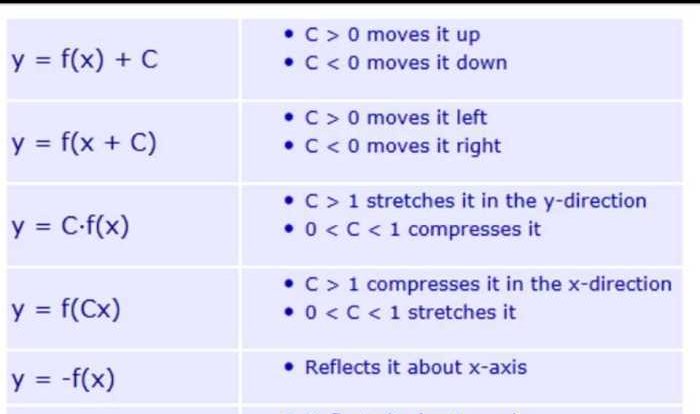Welcome to the realm of Calculus Graphical Numerical Algebraic PDF, where the intricate tapestry of mathematics unfolds, revealing the boundless possibilities of this versatile tool. In this comprehensive guide, we delve into the depths of calculus, exploring its graphical, numerical, and algebraic manifestations, unlocking a treasure trove of insights and applications that have shaped the world we live in.
As we traverse this mathematical landscape, we will uncover the historical roots of calculus, tracing its evolution from humble beginnings to its pivotal role in modern science and engineering. We will examine the contributions of pioneering minds like Newton and Leibniz, whose brilliance illuminated the path towards a deeper understanding of the universe.
1. Calculus in Different Forms
Calculus is a branch of mathematics that deals with change. It has three main forms: graphical, numerical, and algebraic.
Graphical Calculus, Calculus graphical numerical algebraic pdf
Graphical calculus uses graphs to represent functions and their derivatives. This can be a helpful way to visualize the behavior of a function and to find its maximum and minimum values.
Numerical Calculus
Numerical calculus uses numerical methods to approximate the values of functions and their derivatives. This can be a useful way to solve problems that cannot be solved analytically.
Algebraic Calculus
Algebraic calculus uses algebraic methods to find the derivatives and integrals of functions. This can be a powerful way to solve problems that cannot be solved graphically or numerically.
2. PDF Resources for Calculus
- Calculus: Early Transcendentalsby James Stewart: A comprehensive textbook for calculus students, covering all major topics.
- Calculus for Beginnersby Michael Spivak: A gentle introduction to calculus, suitable for students with no prior knowledge of the subject.
- Calculus Made Easyby Silvanus Thompson: A classic calculus textbook that has been used by students for over a century.
- The Calculus Lifesaverby Adrian Banner: A helpful resource for students who need extra help with calculus.
- Khan Academy Calculus: A free online resource with videos, exercises, and practice problems.
3. Applications of Calculus in Real-World Scenarios
Calculus is used in a wide variety of fields, including engineering, physics, and economics.
Engineering
Calculus is used to design bridges, buildings, and other structures. It can also be used to analyze the flow of fluids and the motion of objects.
Physics
Calculus is used to describe the motion of objects, the flow of heat, and the behavior of waves. It can also be used to solve problems in quantum mechanics and relativity.
Economics
Calculus is used to model the behavior of markets, the growth of economies, and the distribution of wealth. It can also be used to make predictions about the future.
4. Historical Development of Calculus: Calculus Graphical Numerical Algebraic Pdf
Calculus was developed independently by Isaac Newton and Gottfried Wilhelm Leibniz in the late 17th century.
Newton developed calculus to help him solve problems in physics. Leibniz developed calculus to help him solve problems in geometry.
The development of calculus had a profound impact on mathematics and science. It made it possible to solve problems that had previously been impossible to solve.
5. Current Trends and Future Directions in Calculus
Calculus is a constantly evolving field. New methods and applications are being developed all the time.
One current trend in calculus is the use of computers to solve problems. Computers can be used to perform complex calculations that would be impossible to do by hand.
Another current trend in calculus is the development of new mathematical models. These models can be used to describe a wide variety of phenomena, from the behavior of financial markets to the spread of diseases.
The future of calculus is bright. Calculus is a powerful tool that can be used to solve a wide variety of problems. As new methods and applications are developed, calculus will continue to play an important role in mathematics and science.
Answers to Common Questions
What is the difference between graphical, numerical, and algebraic calculus?
Graphical calculus utilizes graphs to visualize functions and their derivatives, providing a geometric interpretation of calculus concepts. Numerical calculus employs numerical methods to approximate solutions to calculus problems, making it particularly useful for complex calculations. Algebraic calculus relies on algebraic expressions and equations to derive analytical solutions, offering precision and a deep understanding of the underlying mathematical principles.
Where can I find reputable PDF resources for calculus?
The OpenStax Calculus PDF textbook provides a comprehensive and accessible introduction to the subject. Khan Academy offers a vast collection of free PDF resources, including video tutorials, practice exercises, and assessments. MIT OpenCourseWare hosts lecture notes and assignments from calculus courses taught at the Massachusetts Institute of Technology.
How is calculus applied in real-world scenarios?
Calculus finds widespread application in engineering for designing structures, analyzing forces, and optimizing systems. In physics, it is used to describe motion, energy, and wave phenomena. Economics leverages calculus to model market behavior, predict trends, and optimize resource allocation.
